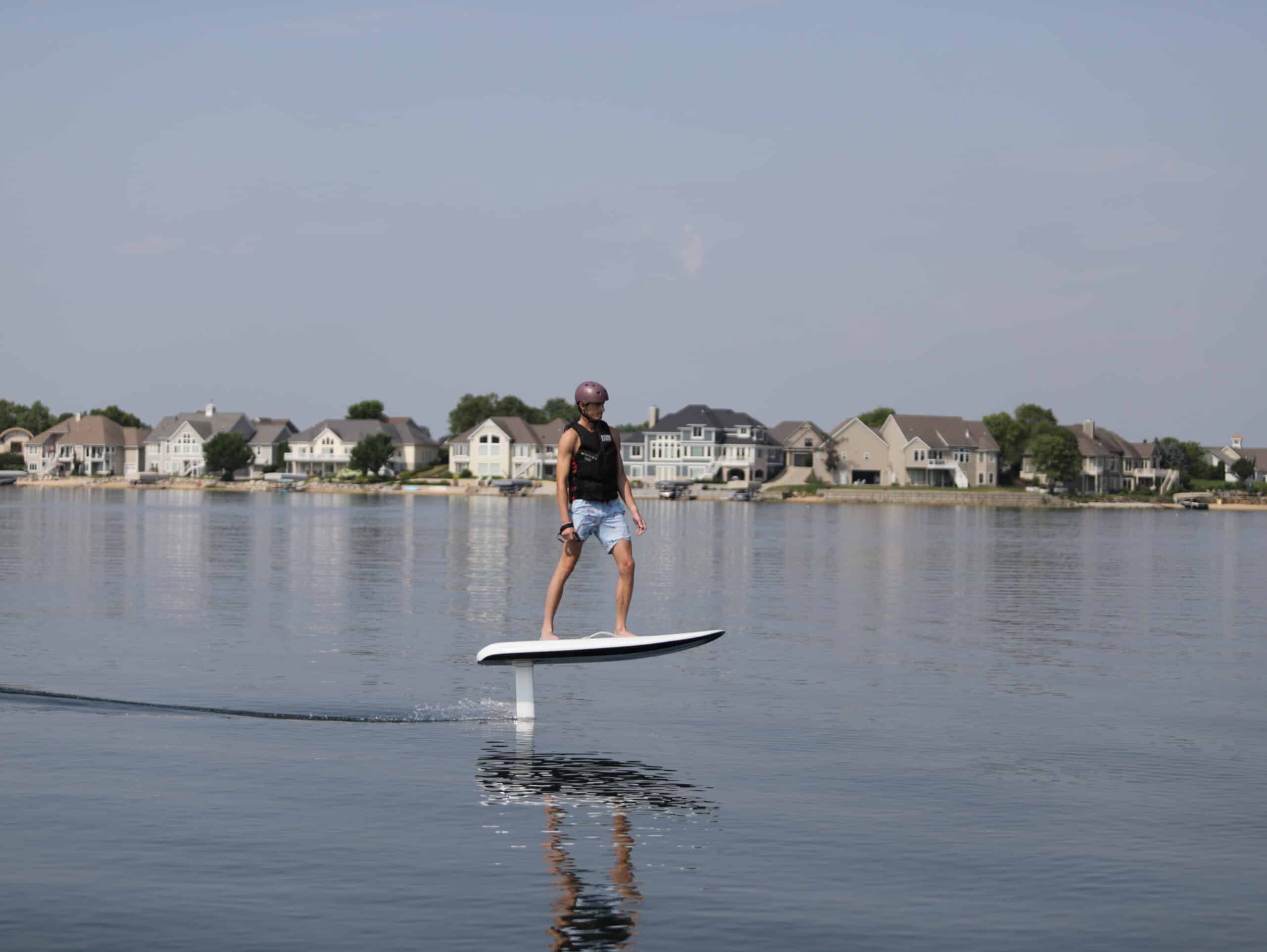Which would you prefer: Foiling or Fliteboarding? Learn about the differences here!
Water sports have evolved significantly over the years, with new technologies emerging to give enthusiasts exciting and innovative ways to ride the waves. Among these, Fliteboarding and Foiling are two very popular activities taking over lakes, rivers, and oceans.
But what exactly are these sports, and how do they differ? If you’re looking to get into one of them but aren’t sure which one to choose, this article will break down the differences, helping you decide which water sport best suits your style.
1. What is Foiling?
Foiling is a broad term used to describe a type of water sport that involves riding a board attached to a hydrofoil. Hydrofoils are unique devices that lift a board above the surface of the water as it gains speed. These foils are often found in sports like wake surfing, kiteboarding, and windsurfing. The main characteristic that sets foiling apart from other water sports is the way the hydrofoil reduces drag by lifting the board off the water, allowing the rider to glide effortlessly above the surface.
How Does Foiling Work?
A hydrofoil consists of a wing-shaped fin (the foil) mounted below the board. When the rider gains speed, the foil generates lift, causing the board to rise above the water. This creates a smooth and quiet ride. This is because the board isn’t constantly in contact with the water’s surface. The faster the rider goes, the higher the board lifts.
In traditional foiling, the rider uses their own power to propel the board. For example, in wake foiling, the rider uses a boats wave to generate speed.
Types of Foiling
There are a few different types of foiling, depending on the board and propulsion system used. Some common forms include:
- Wake Foiling: Just like wakesurfing, you use the boat’s wave to propel you. With a wakesurf board attached to a hydrofoil system, you are able to foil behind a boat.
- Surf Foiling: Using a surfboard with a hydrofoil attached, riders catch waves and use the natural power of the ocean to glide.
- Kite Foiling: This style involves a kite that propels the rider, allowing them to lift above the water on a hydrofoil-equipped board.
- Windsurf Foiling: A windsurfing board equipped with a foil allows the rider to use wind to glide across the water.
Foiling can be done on any body of water, from oceans and lakes to rivers, making it an incredibly versatile and accessible sport. However, it requires a good understanding of balance, speed, and technique to master.
2. What is E-foiling (Fliteboarding)?
While foiling has been around for some time, a newer evolution of this sport is E-foiling. E-foiling takes foiling to the next level by incorporating an electric motor into the hydrofoil.
This motor provides the rider with enough power to glide over the water without needing external forces like waves, wind, or paddling. The board is powered by a battery, which drives the motor and enables the hydrofoil to lift the board off the water.
How Does E-foiling Work?
An E-Foil is essentially a foil board with an electric motor attached to it. The motor is usually located in the hydrofoil itself. It is connected to a small, wireless handheld remote control. The rider uses the remote to control the speed of the motor which controls the lift of the hydrofoil.
One of the most popular brands in the E-foiling space is Fliteboard, a brand that has taken the market by storm with its high-performance electric foiling boards. The Fliteboard comes in different models, including options for both beginners and experienced riders. Fliteboards are known for their stability, speed, and smooth ride, making them a top choice for those looking to try E-foiling.
The beauty of E-foiling is that it’s not dependent on natural elements like wind or waves, which means you can ride almost anywhere, anytime. Whether you’re cruising across a calm lake, riding on a river, or even gliding in the ocean, E-foiling offers a thrilling experience.
E-foiling vs. Traditional Foiling
The primary difference between E-foiling and traditional foiling is the power source. While traditional foiling requires external forces (such as wind, waves, or paddling) to propel the rider, E-foiling uses a battery-powered motor that allows the rider to move independently. This opens new opportunities for riders, especially those who don’t own a boat. E-foiling is also generally easier to learn for beginners because the motor helps the rider maintain speed and balance, reducing the need for the rider to stay in a wave.
Another key advantage of E-foiling is that the motor gives the rider more control over their speed, making it easier to adjust and practice. It’s also quieter than traditional water sports, allowing riders to enjoy a more peaceful experience on the water.
3. Which Would You Choose?
Now that you have a better understanding of foiling and E-foiling, the next step is deciding which one to try. Choosing between Fliteboarding (E-foiling) and traditional foiling depends on several factors, including your experience level, location, budget, and what type of experience you’re looking for.
Consider Your Experience Level
If you’re a beginner at water sports, you might find that E-foiling is an easier entry point. The motor-powered boards make it simpler to gain and maintain speed, which helps you focus on your balance and technique rather than struggling to generate power. The Fliteboard, for example, is designed to offer stability with different models, making it a great choice for newcomers to the sport.
On the other hand, if you’re more experienced with wake surfing, kiteboarding, or other water sports, traditional foiling might be more appealing. Foiling offers a more challenging experience where you rely on waves, which may be more satisfying for those seeking a more traditional and adventurous ride.
Consider Your Budget
The price is another important consideration when choosing between Fliteboarding and foiling. Traditional foiling boards can be a bit more affordable, especially if you already have a boat to use it with. You can also find foils at different price points depending on the quality and materials used.
In contrast, an e-foil can be quite costly. High-quality boards like the Fliteboard typically cost several thousand dollars, especially when factoring in the battery and accessories. However, many people find that the convenience and thrill of electric foiling justify the higher price tag. Especially if you don’t have access to a boat and would still like to enjoy foiling.
What Type of Experience Do You Want?
Ultimately, the decision between Fliteboarding and traditional foiling comes down to the type of experience you’re seeking. Do you want the challenge of mastering the natural elements of wind, waves, and balance? Or do you prefer the freedom of a powered board that lets you glide effortlessly across any body of water?
If you love the idea of feeling like you’re “flying” above the water, both foiling and E-Foiling provide that experience. But E-foiling, with its electric motor, allows for more consistent speed and control, making it easier for beginners and those looking for an all-year-round experience. If you’re after something a little more traditional and enjoy working with the elements, traditional foiling could be the perfect sport for you.








